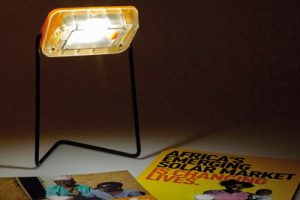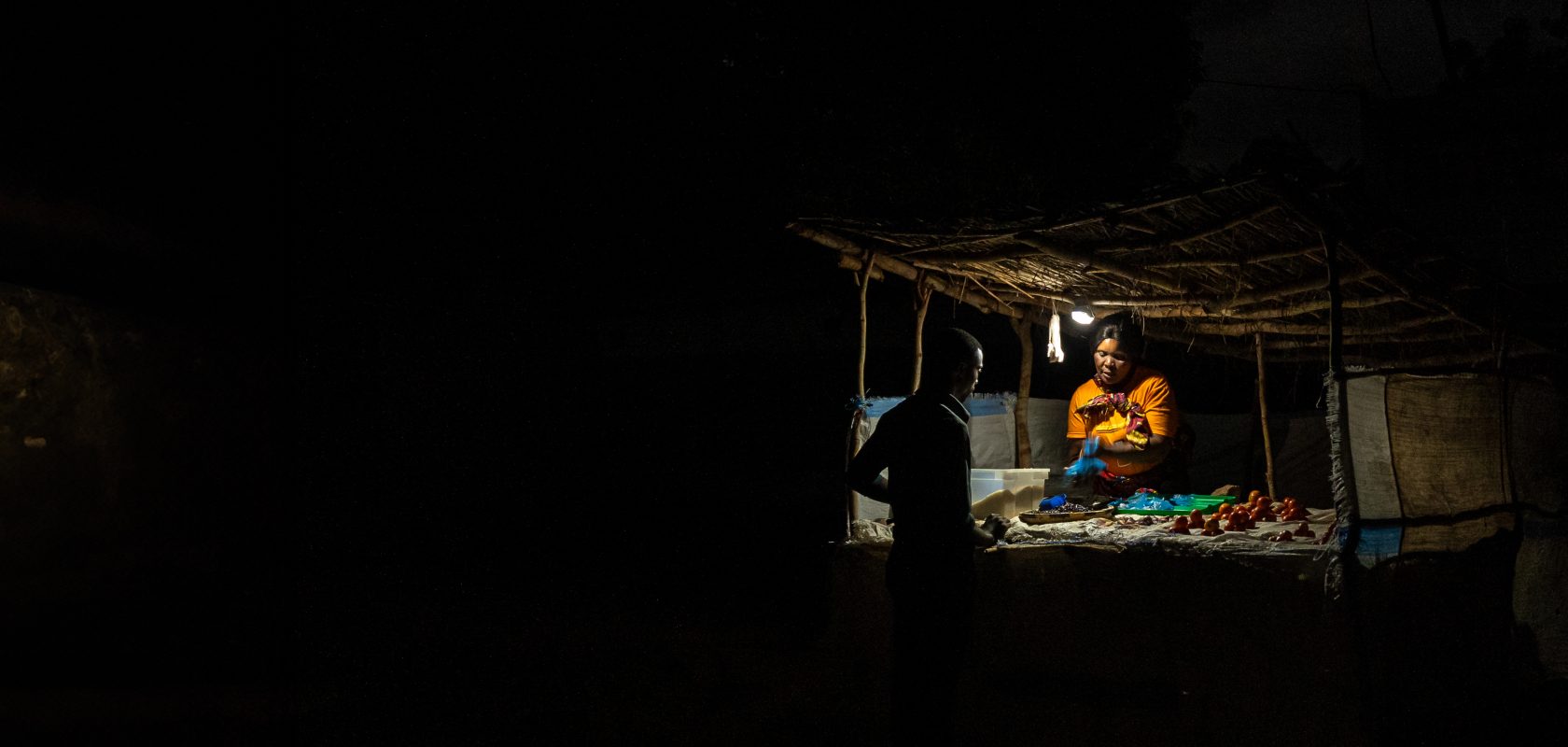In a world where dreams are fuelled by limitless ambition, every journey begins with a simple question: “What if we could…?” For us at SolarAid, this question ignites our passion as we work towards achieving universal energy access. As the urgency to bridge the energy access gap grows, we are persisting in our pursuit of innovative solutions, ensuring that no one is left behind in the energy transition.
As the last-mile distribution sector evolves and the global landscape shifts, so too does our direction and strategy at SolarAid. Today, on the Day of Light, we take a moment to gaze into the rear view mirror, reflecting on the transformations that are shaping our path forward.
One of the earliest memories I have from when we started up in 2006, is using a glass cutter to cut up large solar panels and turn them into small solar panels. We did this, because we recognised that there was a huge need, but also huge potential for small solar solutions in rural Africa. Small solar panels were more affordable, and they could provide small amounts of power to light homes and power radios. Working with entrepreneurs in East Africa to design, manufacture and then market and sell these products was the first thing we achieved.
Fast forward nearly two decades, and there are now mass-produced products designed specifically to meet the needs of people living in small off-grid households in sub-Saharan Africa. SolarAid alone has distributed over 2 million solar products, and millions more are being distributed by hundreds, if not thousands of solar companies operating across the continent.
We can celebrate the fact that there are more people turning on solar lights across sub-Saharan Africa now than ever before. That represents huge success, and as part of a growing and maturing sector which has been continually adapting and innovating over the last 15 years, we are proud of the role we have played in helping us get to this point.
Looking back, we can see there are a few vital changes that have happened over the past decades that have taken the sector to where it is now, and which ultimately is informing the shift in direction and focus for SolarAid as we are working towards leaving no one behind in the energy transition.
Technology and game changing innovation
Today, the landscape across many countries in sub-Saharan Africa is very different to when we set up. Simply put, now there are solar products available for sale for customers to purchase and benefit from, that was not the case 15 years ago.
Over the past decade, the price of actual solar technology has gone down, and the prices for Solar PV, LED lights, and lithium based batteries are continuing to decline. This means the overall price point is making products more affordable. For us at SolarAid, a key moment was when we launched the SM100 solar light together with Yingli, a product that was designed to be the most affordable solar light ever produced, making it easier for low-income households to make the switch to solar from candles or kerosene.

The SM100 launched in partnership with Yingli.
Another big change that has taken place over the past ten years has been pay-as-you-go technology which helps address affordability barriers from some customers, enabling them to purchase solar home systems in instalments over a period of time and pay in smaller, more affordable increments over 18-20 months.
Taking the price and technology developments over the past decades into account, the challenge is no longer the availability of solar lights and systems. The problem is that tens of millions of households are falling behind, struggling to afford the solar products on offer. The poorest and most climate vulnerable households are still without access to solar power, light or electricity.
Recognising this big gap, our focus has shifted towards innovation and developing projects which intentionally set out to address this challenge and lead the game changing action needed to help ensure that no one is being left behind.
Measuring success
While there are many interventions within the solar sector, designed to support solar companies and increase access to solar solutions, we rarely see projects which measure success in terms of the percentage of a population a project, business model or intervention is able to reach. At SolarAid, we are therefore challenging ourselves and the sector when talking about ‘Leaving No One Behind,’ to assess the effectiveness of an intervention by measuring the percentage of a population that is being reached. We have recognised we need to aim for 100% access and see how close we can get. Only by measuring in this way, will we be able to say with confidence that we know how to achieve SDG7.
Strategic partnerships
SDG7 will not be achieved by any single actor. It will only be achieved through collaboration, by intentionally developing projects which prioritise the poorest, hardest to reach sections of society and by measuring the effectiveness of interventions in being able to fast track progress towards universal access.
At SolarAid, we are committed to working with partners to design and test models that have the potential to create a domino effect where they are reaching a high percentage of a population and can be scaled and replicated across the continent.
That is why, alongside our Energy-as-a-Service ‘Light a Village’ project in Malawi, we are also working in partnership with partners in Senegal, Madagascar and Sierra Leone to implement similar game changing models. It is why we are intentionally working in areas characterised by low market development and high levels of poverty, and where we can demonstrably enable a high percentage of a rural population to access solar systems.

Light a Village is one of our key models, but we are also working with partners across the continent to achieve universal energy access. Photo: SolarAid/Kondwani Jere.
Working in partnerships means realising that the innovations, the models, the piloting, the research that is required all goes well beyond the means of SolarAid. With the sector maturing since those solar panel cutting days, it is now about realising that there are already set up distribution networks and expert organisations in their own countries, and the partnerships can leverage expertise we don’t have. Scaling through others means we can focus on what we are best at, while joining forces with other expert organisations across the off-grid energy sector to jointly achieve universal energy access.
So, the question remains…”What if we could…?” What if we could achieve universal energy access by 2030? We believe that we can. As we continue to drive action towards this ambitious goal, we are inviting key stakeholders, from governments to commercial and development actors to collaborate with us as we seek to test, replicate and scale this work across the continent.
